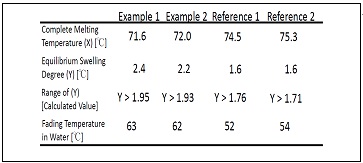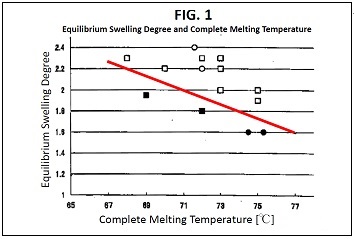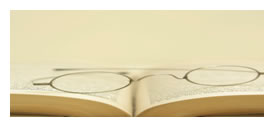Summary of Parameter Patent (Polarizing Film) Case in JapanQuestion Of Whether Written-Description Requirement To Support Claim Is Fulfilled
About Polarizing Film
In the present case, there were disputes about patentability of a”process of manufacturing a polarizing film.”
What is the polarizing film? It is a film having lines microscopically printed thereon parallel to each other e.g. only in a longitudinal direction. Only a natural light polarized in such a longitudinal direction is allowed to pass through the film, and the light polarized in a transverse direction is prohibited from passage, thereby causing the polarizations of light to be aligned with a constant direction.
The polarizing film is applied to e.g. a 3-D television configured such that it shows images for a pair of eyes in a synchronized manner through a display-side polarizing filter, thereby combining the images formed at a pair of eyes through a glass-side polarizing filter to cause a viewer to recognize the images as a 3-D object.

Claim Recitations
The invention having industrial applicability described above in the present case was granted patent (Japanese Patent No. 3,327,423) whose claim 1 recites as follows:
(1. A process of) …… when manufacturing a polarizing film by uniaxially drawing a polyvinylalcohol-based film rolled web, through the use of polyvinylalcohol-based film rolled web of 30-100 μm in thickness configured such that a relation between a complete melting temperature (Y) in hot water and an equilibrium swelling degree (Y) is expressed in equations:
Y > -0.0667 × + 6.73 ・・・・(I)
X ≧ 65 ・・・・(II)
where X denotes the complete melting temperature (℃)of a film piece of 2 cm x 2 cm in hot water, and Y denotes the equilibrium swelling degree obtained …… after immersing a film piece of 10 cm x 10 cm in a constant temperature bath at 20 °C for 15 minutes to swell the film piece……
The invention having the processing conditions limited to a specific scope in the above manner is called a parametrically-limited patent.
Detailed Explanation Of Invention
The volume of the specification describing the present invention is as small as 3 pages in total without accompanying any drawings or graphs, and the descriptions supporting the parameters are limited to the table shown below in the detailed explanation of the invention (i.e. written description):

The above table describes nothing but the fact that there are two points of data satisfying Eqs. (I) and (II), and other two points of data not satisfying the equations. In the specification, there are no explanations made about how the equations are formulated, and only”through the use of polyvinylalcohol-based film having a relation of XY expressed in the equations” described, out of context, in
The above table describes nothing but the fact that there are two points of data satisfying Eqs. (I) and (II), and other two points of data not satisfying the equations. In the specification, there are no explanations made about how the equations are formulated, and only”through the use of polyvinylalcohol-based film having a relation of XY expressed in the equations” described, out of context, in [0008], [0012].
Post-Grant Opposition Filed
As described above, the present invention was temporarily granted patent, but thereafter, the post-grant opposition was filed by a third party. The decision to cancel the patent was provided.

Later Submission Of Data
Upon arguments against the opposition, the patentee, for the first time, submitted the drawings showing data of the experiment performed before filing the application as an experimental result certificate. Aside from regrets that such data should have been filed along with the application, it was argued that the data was submitted not for the purpose of any new addition to the examples but for the purpose of some supplement to the examples. As shown in FIG. 1 below, the supplement is indicative of ten points of new data in addition to original two points of open circles and original two points of solid circles.

Decision Provided By JPO
The JPO decided to cancel the patent, without taking account of the later submitted data, after having made the following reconsiderations:
- Firstly, a relation between the recitations in the claim and the descriptions in the detailed explanation of the invention was considered.
| The scope defined by such two equations is broadly extended, and the examples are not sufficient for the understanding that all the subject matters satisfying these equations could achieve the advantageous effects in polarizing capability and durability. Even in light of other descriptions in the specification and the common technical knowledge in the relevant field, one could not be convinced that the subject matters satisfying the two equations could achieve the above advantageous effects. The proof/ground for how the two equations are formulated is not clarified. As a result, it is not admitted that the invention sought to be protected (that is, the claimed invention) is described in the detailed explanation of the invention in the specification. |

- Secondary, whether the detailed explanation of the invention is described sufficiently for enabling the invention to be implemented was considered.
| The scope defined by the two equations recited in claim 1 is broadly extended; however, what conditions of manufacturing a film (a degree of PVA-polymerization, a desiccating agent, a desiccating time, or the like) satisfy the two equations and provide the film excellent in polarizing capability and durability is unclear even in light of the detailed explanation of the invention. It is not admitted, therefore, that the detailed explanation of the invention is described, with respect to the objective, structure, and effects of the invention, to such an extent that a PHOSITA could easily implement the invention. |
- In view of the above, the JPO concluded that the patent that does not meet the predetermined requirements should be cancelled.
In the present case, with complaints about the cancellation of the patent, the patentee arose the disputes with the JPO in the IP High Court.
Opinion Of IP High Court
- Are support requirements fulfilled?
The IP High Court affirmed the decision provided by the JPO.
The court considered the requirements to be met by the descriptions in the specification as originally filed (i.e. support requirements). It was considered by the court whether the claimed invention had surely been described in the detailed explanation of the invention in the specification at the application time.
Why are the support requirements needed? If the claimed invention that is not sufficiently described in the detailed explanation of the invention is allowed, a right to exclusively protect the unpublished invention would be generated. Such a claimed invention would deprive the public of the benefits of free use of the invention, which results in the prohibition of industrial development so as to conflict with the goal of the patent system.
In the court’s opinion, the above point was firstly confirmed. - How is original specification described?
As to the support requirements, the court held on the basis of the descriptions in the original specification that:
| A PHOSITA could not understand that it is possible to recognize the scope defined by two equations from the matters described in the detailed explanation of the invention and the common technical knowledge at the application time. It is not considered that a manufacturing process whose relation of XY falls within the scope defined by the two equations recited in the claim is described in the detailed explanation of the invention. |
In such a manner, the court held that the claimed invention is not described in the detailed explanation of the invention in the specification as originally filed.

- Later submitted data was not considered.
As described above, FIG. 1 was submitted in the course of reconsiderations initiated by the opposition. Relying upon the fact that the later submitted data, which should have met the support requirements, was neglected by the JPO in the course of the reconsiderations, the patentee made the following arguments.
As to the neglect of the later submitted data,
| he decision was provided only on the basis of the four points of data in total consisting of two points for each of examples 1, 2, on the assumption that there would be no points of data other than the four points, without taking account of ten points of data described in the certificates of experimental results submitted in the course of reconsiderations. The JPO erred in such neglect of the later submitted data. |
What are the retroactive effects of the examination guidelines? As argued above by the patentee, the guidelines at the time of filing of the application of the present patent did not explicitly provide a rule to describe full experimental data, and therefore, no issue was raised for this point in the examination stage. The guidelines were revised afterwards in some expression, and it was neither rational nor allowed that the revised guidelines were retroactively applied to the specification, and the patent was cancelled only on the grounds of unfulfilled written-description requirement.
Court’s Opinion About Later Submission
As to the later submission of the data as a part of the patentee’s arguments, the court held that:
| It is not allowed that any data indicative of some experimental results is submitted after the application time for the supplement to the contents of the detailed explanation of the invention to cause the specification to fulfill the support requirements, because such a conduct conflicts with the goal of the patent system. ….. If this opinion is applied to the present case of later disclosure of a relation of XY after the application time, such a conduct should not be allowed. |
It was not allowed that the specification was caused to fulfill the support requirements by later submitting the experimental data.

Retroactivity Of Examination Guidelines
As to the issue in the examination guidelines, it was clarified and admitted by the court that the guidelines provide the Examiner with the basic principle of understanding, and are widely used by the applicant as”guidelines.”
It was explicitly held, however, that, even based upon such a premise, the examination guidelines are provided not to serve as the principle of law but to serve as the criteria ensuring the equitable/rational proceedings of the JPO, and the judgment of the court should not depend upon whether the guidelines were applied as the criteria or not in the examination stage since they are not the principle of law.
It was held that, even when the examination guidelines are revised, the purport thereof is in line with the previous one, and therefore, the results, which are similar to those obtained as if the guidelines were retroactively applied, would not conflict with the Constitution.
If you have any questions concerning the above, please feel free to contact us by sending email to inter@ypat.gr.jp.
